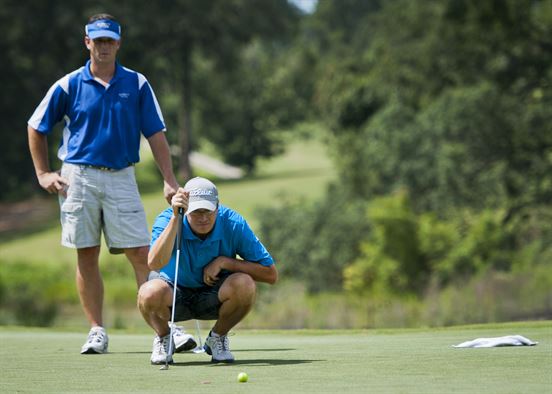
All it takes is one good swing…and you’re hooked! Challenging, frustrating, yet somehow enjoyable, golf is one of the most unique and popular sports in the world. It’s essential to understand the demands of the swing in order to prepare properly. There are some important things to think about to maximize your enjoyment of the game.
What does golf require? For some of us, there are roughly 80 swings over the course of three hours. For MOST of us, there are roughly 110 swings over a four hour period! The swing requires a lot of dynamic mobility and stability across all of the major joints. If you don’t have access to smooth motion, you are going to fatigue before the end of your round. Anybody who has played the game of golf knows what happens when you fatigue…it’s not pretty!
The most obvious necessary motion is rotation. But where are we getting that rotation? Here’s a hint…it’s all in the hips! We need available rotation in BOTH sides of the pelvis to effectively hit the golf ball over and over again. Poor hip rotation is the most direct cause of lower back pain. We have big and powerful hip muscles designed to rotate, load, and control motion. When you exercise, warm-up, or take a golf lesson, be aware of how well your hips can rotate in your back swing and follow through.
The foot and ankle may be the most under appreciated part of swing mechanics. During the backswing, the back leg needs to maintain an everted (pronated) position in order to prevent any extra motion. This basically means that rolling to the outside of your foot as you move through your backswing can allow your hips to sway and remove power from the rotation in the hip. The follow through requires the opposite. As the club swings through the ball and your hips rotate, the momentum will invert (supinate) the follow through foot. Healthy motion at the foot and ankle will allow the hips to fluidly turn towards your target.
The backswing hip needs to be able to internally rotate as the arms drive the wind up of the swing. Remaining in our athletic stance, and not lifting up, is called flexion of the hips. As we follow through, the hips need to internally rotate, shift laterally with the momentum of the swing, then lift up and through as we finish, which is called extension of the hips. A deficit in ability of any of these motions can cause a number of problems on the course.
The club in our hands is the driver of the backswing. This means we need healthy shoulder and spine motion to start the rotation process. The best golfers have access to healthy side flexion, extension, and rotation of the spine in both directions. Keeping the head down and on the ball requires a very specific combination of motions through the shoulder, scapula, and spine. A practice in awareness will help you realize what your body is capable of and what you need to work on.
Like any sport, golf requires healthy three-dimensional mobility and stability to have success. If your current exercise routine is primarily sagittal plane (which is straight forward) you will be limiting your ability when you hit the course. If you have a seated commute or working environment, make sure you have a custom warm-up routine. If you don’t have a regular dynamic stretching routine to keep your joints and muscles healthy, now’s the time to start.
Although some argue golf isn’t a “sport”, the best prepare like it is one. Don’t expect to have healthy motion if you don’t regularly practice. Take time to feel out where your strengths and limitations are. Learn to incorporate the motions of the swing into your exercise routine. More than any sport, the better we are at golf the more enjoyable it is. Get to work!

